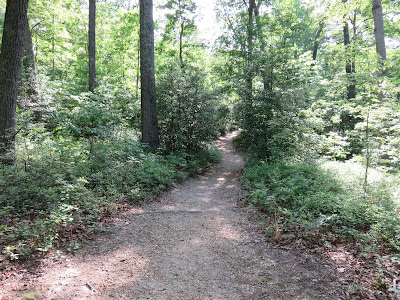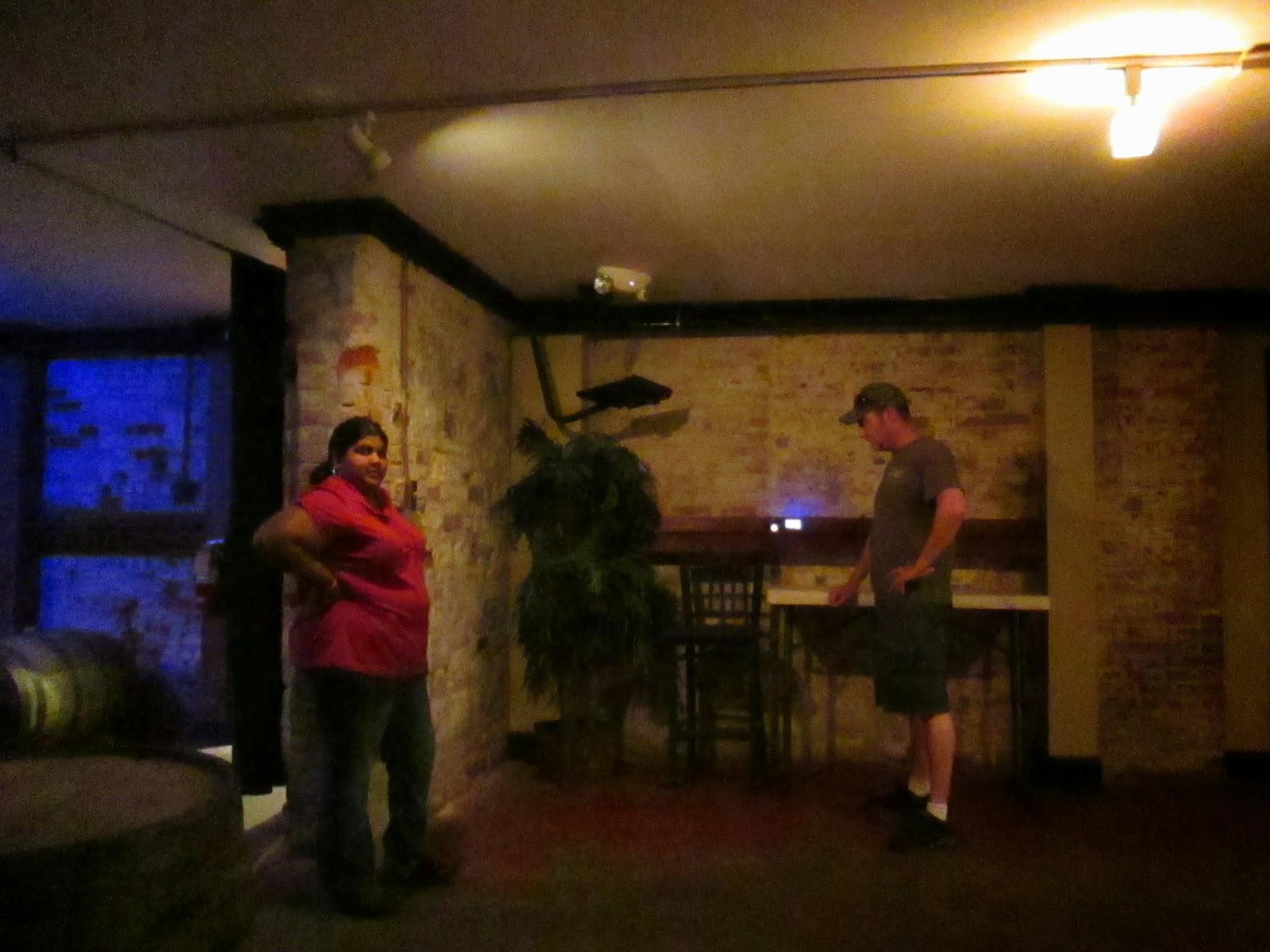1. Peyton Randolph House
 |
| The Peyton Randolph House |
Some of the history behind the
ghost stories associated with this house originate with a slave named Eve. In 1775, the
Royal Governor of Virginia, Lord Dunmore issued a decree stating that any slave
who ran away from his or her colonial owner to join the British Army would be
granted freedom. One day Eve, desperate for a taste of
freedom, chose to leave her son behind to join the British. However, it wasn’t
long before she was caught and brought back to the home. She suffered a beating
as punishment, and in the days that followed she became very insubordinate according to her owner.
Unable to control her any longer, her owner decided to sell
her, and she was pried from her son's arms and, in a very crude
manner, thrown on a horse with her hands and feet bound. As the horse rode away, she shouted a curse upon anyone who lived in the house from that point forward. Those who lived in the house after her departure experienced
sudden death, tragedy, or committed suicide.
As far back as 1824 Lafayette believed the
house was haunted. One night, as he was in one of the rooms, he felt a hand upon his
shoulder; he turned suddenly to find no one there.
Legend has it, that if you are daring enough
to knock on the door of the Peyton Randolph house at night, you will hear
something knocking back. We personally witnessed a similar occurrence. Late one
night we approached the Peyton Randolph house. As we drew nearer to the house
an eerie feeling overcame us. Maybe it was the fact that the house sat in
complete darkness, or maybe it was something else. Nevertheless, one of the
members of our group walked up to the door. As we watched and listened, he
knocked three times. We didn’t hear a knocking response. However, we did hear
the creaking of old floor boards as if someone were walking around inside.
2. The Indian School at William and Mary
 |
| The Indian School at William and Mary |
Established in 1697, this school
was created to educate young Indian men in reading, writing, English,
arithmetic, and religion. The school was funded by the estate of Robert Boyle.
Legend has it that one of the Native American boys enjoyed running the halls of
the school and the grounds of the campus at night. One night he climbed out of
his window and disappeared into the darkness, never to be seen again. The
school closed shortly after the start of the American revolution however, some of the spirits of the former students remain.
To this day,
people who pass the school at night have reported seeing the apparition of the
boy making his nightly run around the campus. Also, many have reported seeing the ghosts of several Native American children running across the sunken gardens late at night, as if they are attempting to run away from the old school.
3. The Governor's Palace
 |
| The Governor's Palace |
Built in 1722, the Governor’s Palace in Williamsburg is perhaps one of the grandest structures in
the state of Virginia. Many of Virginia’s governors including Patrick Henry and
Thomas Jefferson called the palace home. The palace set the perfect scene for
many extravagant balls and social gatherings in Williamsburg.
During the Revolutionary War, the palace became the headquarters for General
Charles Lee of the Continental Army, and was later used as a field hospital. On
December 22, 1781, the Palace, currently being used as a hospital for over one hundred ill continental soldiers, caught fire. All but one of the patients were evacuated as
a magnificent structure burned to the ground.
In the 1930's, archaeologists discovered one hundred thirty-seven skeletons buried in the palace garden. Two of the skeletons were female, the rest appeared to be male British soldiers who died in bed, most
likely during the time that the palace was being used as a hospital. It is
speculated that the two females were nurses who cared for the soldiers
while they were ill.
Since then the governor’s palace has been rebuilt to
resemble the magnificent structure it once was. It is said that if you sit on
the palace green at night you will see a candle light passing in front of the
windows of the palace. It’s believed that this candle is being carried by the
ghosts of the nurses who were found buried in the gardens, still tending to
their patients as an echo in time long after the war has ended.
4. George Wythe House
 |
| The Wythe House |
This was the home of George Wythe,
first signer of the Declaration of Independence and teacher/mentor to Thomas
Jefferson. The home, thought to be built in the mid-1750s, was constructed by
George Wythe’s father-in-law, Richard Taliaferro. It also served as General George
Washington’s headquarters just before the siege of Yorktown.
One
prominent report of the home being haunted involves Lady Anne Skipwith, who
often came to visit the family. One evening, while attending a party at the
Governors Palace, Lady Anne got into a fight with her husband. In a fit of
anger, she rushed out of the palace and down the palace green, back to the
Wythe house where she was staying. On the way, she lost one of the shoes she
was wearing. The sound of her flight down the cobblestone path leading back to
the house is often heard by witnesses. Lady Anne has also been seen in the home
coming out of the closet in the room where she stayed. In addition, an odd
clicking rhythm has been heard ascending the staircase in the home. The sound
is thought to come from Lady Anne as she returned from the party at the
Governor’s palace wearing only a single shoe.
Other
reports include the sounds of a woman’s melodious singing and of furniture
being moved around. An employee also reported being tapped on the shoulder by
an unseen presence.
5. Eastern State Hospital
 |
| Old Public Hospital |
Williamsburg, Virginia is home to the first lunatic asylum
in North America, The Public Hospital for Persons of Insane and Disordered
Minds. This asylum saw its first patient on October 12, 1773.
In 1841, then known as the Eastern Lunatic Asylum, its one hundred twenty-five inmates were supervised by a
physician named Doctor John Gault. John Gault remained the superintendent of
the facility until it became devastated by the Civil War in 1862. During this
time, the Union Army assumed control of the facility, neglecting many of the
patients. Dr. Gault, disheartened by the poor treatment of the patients, fell
into a state of depression. He went to his home, which stood on the grounds of
the hospital, and overdosed on Laudanum, causing the blood vessels in his head
to rupture. He was found lying in a pool of blood.
The house has long since
been demolished. However, Dr. Gault’s ghost remains. It is said that his spirit
roams the grounds of the hospital at night and echoes through the hallways in search of his distraught
patients.
6. The Capitol Building
 |
| The Capitol Building |
Sitting at the end of the Duke of Gloucester street, you
will find Williamsburg’s Capitol building, where many significant historical
events took place. In 1698, the Jamestown State House was destroyed by fire and
the decision was made to move the colony’s government to WIlliamsburg, then
known as Middle Plantation. It was built by Henry Cary, who also built the Wren
Building at the College of WIlliam and Mary. It was here that Patrick Henry
spoke against the Stamp Act on May 29, 1765, and in 1776 patriots assembled here to
speak for American independence. Also, the first floor of the West building
housed the General Court.
Today,
you can play one of the jurors during a candlelit reenacted trial of Grace
Sherwood, who was tried for witchcraft in 1776. This event is called Cry Witch.
Many tourists who attended this mock trial reported seeing a well-played female
reenactor in the audience. Upon rendering their compliments to the other
reenactors, they were informed that there
was no woman fitting that description in attendance. It became rumored that
this colonial-clad woman was the ghost of the Witch of Pungo, Grace Sherwood.
Sightings of this woman continued until 2006, around the same time that Grace
Sherwood was pardoned by Governor Timothy Kaine.
Watch the video: Colonial Williamsburg History and Haunts for more info and more haunted locations in Williamsburg, VA.
Watch the video: Colonial Williamsburg History and Haunts for more info and more haunted locations in Williamsburg, VA.



















































